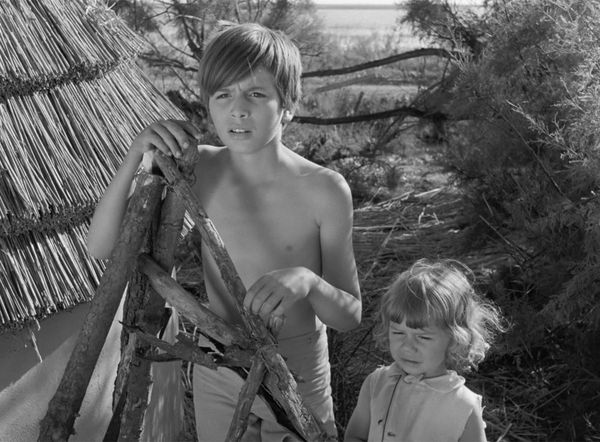Eye For Film >> Movies >> White Mane (1953) Film Review
White Mane
Reviewed by: Caro Ness

Filmed prior to the extraordinary The Red Balloon, what appears to be an old fashioned boy’s adventure story is actually another beautiful allegory about the eternal battle between good and evil. Nominated for a BAFTA in 1954 for best documentary, it won the Prix Jean Vigo and the Grand prize at the Cannes Film Festival in 1953.
Written eight years after the war ended, it features a narration co-written by the great James Agee and it is shot to great effect in black and white on the arid and startlingly beautiful marshes of the Camargue.

White Mane is a wild stallion that the local gauchos are determined to capture and tame. Chased into a pen, White Mane resists being subdued and escapes in a dramatic fashion, watched by a young fisherman, Folco (Alain Emery), who barely scratches an existence with his grandfather and younger brother (played by Pascal Lamorisse, who later played the boy in The Red Balloon to great effect).
The cowboys, fired with greed and wounded pride, then try to flush the stallion out by setting a brush fire but the stallion allows Folco to help him out of the marsh to safety. Unfortunately he is captured again when he tries to protect his herd from capture by the gauchos and then, penned once more, battles with another stallion for leadership of the herd. This particular scene is filmed quite brilliantly by Lamorisse. Eventually White Mane escapes and returns to Folco who nurses him back to health.
Once again the cowboys return, determined to gain ownership of White Mane, despite the fact they had told Folco he was his if he could tame him. A breakneck chase across marshland and dunes ensue. The ending is something of a shock to the system. One expects something neat and happy, but while it IS open to interpretation, it is undeniably a shock in a children’s film to suggest death may be a possibility. We realize the film is really begging us to face life’s eternal questions: what is hatred and why does it exist? What causes war and why can’t we just co-exist? The film tells us that if the young boy and horse cannot find peace in the marsh then they will have to find it elsewhere – perhaps in oblivion.
White Mane is a fabulous mix of docu-realism, myth and pure imagination. This film is a tad longer than The Red Balloon at 50 minutes but it is just as memorable and it too leaves us with a whole raft of questions for which we need to find answers. Featuring wonderful cinematography this film is most notable because it does not pander to or patronize the child viewer, instead demanding of them complex approaches to perennial problems.
Reviewed on: 02 Nov 2008
















